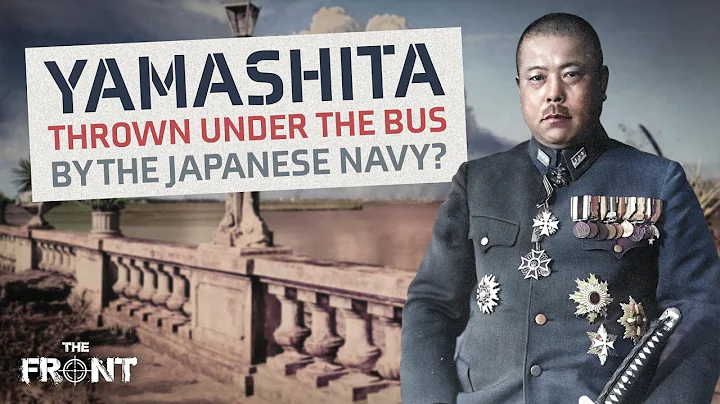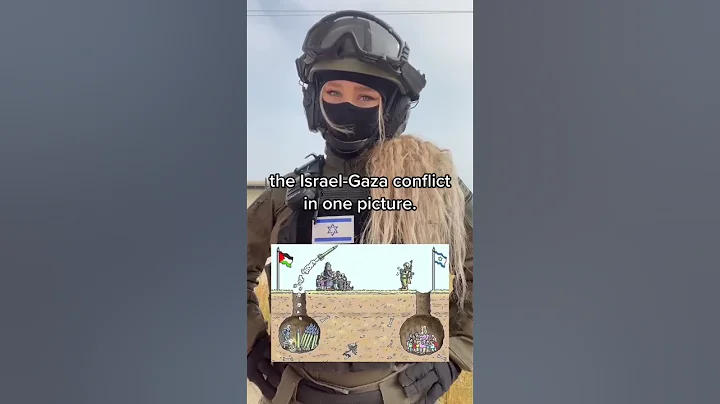Speaking of Yamashita Fengfumi, many friends who like modern history must be familiar with this person. He is known as the "Malay Tiger " and was an out-and-out warrior during World War II.
Yamashita Nobumi (November 8, 1885 - February 23, 1946), Japanese Army General, Japanese Army Commander during World War II, and war criminal. A native of Kochi Prefecture. Graduated from Army Sergeant School and Army University . He once served as military attache stationed abroad and commander of an infantry regiment. In September 1944, he was appointed commander of the 14th Front Army and led his troops to fight stubbornly on Luzon Island in the Philippines until Japan's defeat.
Yamashita Tomofumi, Chief of Staff Lieutenant General Suzuki Sosaku, Chief of Staff Colonel Sugita and others planned the "purge operation" against Chinese Singaporeans in Singapore. After they identified the hostile elements, they immediately punished them (death penalty). This is The famous Singapore Massacre. Yamashita Tomobumi massacred civilians many times and was hanged in Manila in 1946 after the war.
- from Baidu Encyclopedia
This man was born in Kochi County, Shikoku on November 8, 1885. His family has been practicing medicine for generations, but in his generation, he was obsessed with serving as a soldier. At the age of 31, Yamashita Fengfumi graduated from the Japanese Army Military Academy, but he has not been reused by senior officials. A big reason is that he does not come from a celebrity background. Another reason is that he once suggested Japan's strategic views to his superiors, believing that Japan should stop invading China and establish good relations with Western powers such as Britain and the United States. This view caused him to be ostracized and was transferred to the puppet Manchuria Kwantung Army to hold some unimportant positions.

Pictured on the left, Yamashita Nobumi
1941, the first year when Japan started the Pacific War, became a turning point for Yamashita Nobumi. On December 7, 1941, Japan attacked Pearl Harbor, and the United States declared war on Japan. On December 8, Yamashita commanded the Japanese army to launch the Malaysia war. He led more than 30,000 Japanese troops to move quickly on bicycles. In just two months, they advanced from the southern section of Thailand to Singapore, defeating the British army with a small number of troops. Since then, he has become famous in one battle and won the title of "Malay Tiger".
Even so, he was not reused by the Japanese government. After taking Singapore, he was transferred to Manchuria. It was not until 1944, when the Japanese army was declining, that the Japanese government took him seriously and made him the commander of the 14th Front. Go to the Philippine battlefield to command operations.

In the picture, Yamashita Fengfumi
Yamashita Fengfumi was full of confidence, thinking that he could fight a beautiful turnaround like the way he won Singapore in one go. However, he found that the situation on the battlefield had changed, and he could only describe it in four words: "It takes time to defeat me." His combat strategy was obstructed by the Japanese military, and the Japanese military's serious military misjudgment made him hampered everywhere. The Japanese military believes that the US military has lost 19 aircraft carriers and 45 battleships, and is no longer able to fight the Japanese. In fact, only two US cruisers were damaged, and they all returned to the battlefield after repairs.
When Yamashita Fengfumi saw US military fighter jets flying continuously to the Philippine battlefield, he realized that the intelligence was wrong, and this error was fatal. He called back the Japanese military department, and got a reply asking him to continue fighting no matter what. Yamashita Fengfumi could only continue to fight with the Allies with his men until Japan announced its surrender in August 1945.

Yamashita Fengfumi officially surrendered to the Allies in September, and was then sent to the Manila Military Tribunal as a war criminal. On December 7 of the same year, the Manila Military Court sent Yamashita to the gallows for the massacre of more than 20,000 innocent people in Manila.
During the military court trial, Yamashita Fengwen was very cooperative. A subordinate testified for him, saying that the Manila Massacre was not planned by Yamashita Tombumi, but was a massacre carried out by the Japanese army led by Rear Admiral Iwabuchi Miji after they refused to obey Yamashita Tombumi's order to withdraw from Manila. The massacre launched by the Japanese army against the Chinese in Singapore in 1942 was also planned by his subordinate Tsuji Masanobu.
Although his subordinates said that these massacre plans had nothing to do with Yamashita Fengfumi, Yamashita Fengfumi chose to plead guilty. He said that he felt ashamed for not restraining his subordinates from massacring civilians and was willing to pay for the lives of the innocent people who were massacred.Before Yamashita came to the end of his life, he had won the respect and sympathy of American soldiers including MacArthur and others.

Although Yamashita Fengfumi was hanged, his legend did not end. On the eve of the Japanese surrender, many Filipinos witnessed the Japanese army moving a large amount of treasure. Based on clues, the US military found a large amount of gold and nickel hidden by the Japanese army in the dense forest. Nickel was an absolutely precious metal for Japan during the war because the military industry was inseparable from this metal.
Soon there were rumors that Yamashita Fengwen had a huge treasure. This is the famous "Yamashita Treasure" to this day. Legend has it that Yamashita ordered soldiers to plunder the occupied areas and prepare to hand over the looted gold treasures to the Japanese headquarters as war funds. However, these treasures were not completely transported to Japan, but were secretly hidden by him. The biggest treasure trove is not in the Philippines or Singapore, but in Japanese-occupied Taiwan.

It is impossible to say whether anyone has found these treasures, but it is certain that after the US military occupied Japan, they did find a large number of gold bricks, the value of which is unimaginable.
In addition, former Philippine President Imelda Marcos, who was famous for corruption after the war, confessed to the media in 1992 that Yamashita's treasure was not a legend. Her husband Ferdinand Marcos got the vast majority of it. part of the treasure and become super rich. Her husband did not obtain the money for his own benefit, but to help the Philippines survive the trough of economic development in the 1960s and 1970s. He also admitted that the remaining money was hidden in the cracks of the wall of his home. As for what happened later Who took it away, she didn't know.

In 2003, American writer Sterling Seagrave wrote the book "The Golden Warrior", which described Yamashita Fengfumi's treasure as being near the border of Yunnan and Myanmar. Despite another wave of treasure hunting craze, no one has ever found it.
Yamashita Nohei's life:
- August 1917 (Taisho 6th year) - attached to the General Staff Headquarters.
- February 1918 (Taisho 7th year) - Member of the General Staff Headquarters (German class).
- April 1919 (Taisho 8th year) - Deputy Attaché of the Embassy in Switzerland.
- July 1921 (Taisho 10th year) - Stationed in Germany.
- February 1922 (Taisho 11th year) - promoted to major.
- July 22 - Attached to the Army Technical Headquarters and concurrently as a lecturer in the Military Affairs Bureau (establishment squad leader).
- August 1925 (Taisho 14th year) - promoted to lieutenant colonel.
- March 16, 1926 (Taisho 15th year) - Army University instructor (part-time).
- February 22, 1927 ( Showa 2) - Deputy Attaché of the Embassy in Austria and Hungarian Legation.
- August 1, 1929 (Showa 4) - Promoted to Colonel. Deputy of the Army Ordnance Factory (Director of the Military and Political Investigation Committee of the Military Investigation Department).
- August 1, 1930 (Showa 5) - Captain of the 3rd Infantry Company.
- April 11, 1932 (Showa 7) - Chief of the Military Section of the Army Ministry.
- August 1, 1934 (Showa 9) - promoted to major general.
- March 15, 1935 (Showa 10) - Director of Military Investigation of the Army Ministry.
- March 23, 1936 (Showa 11) - Commander of the 40th Infantry Brigade.
- August 26, 1937 (Showa 12) - Commander of the China-based mixed brigade.
- November 1 - Promoted to lieutenant general.
- March 12, 1938 (Showa 13) - Commander of the China garrison.
- July 15 - Chief of Staff of the North China Front.
- September 23, 1939 (Showa 14) - Commander of the 4th Division.
- July 22, 1940 (Showa 15) - Director of Army Aviation and Chief of Army Aviation Headquarters.
- December 10 - Germany dispatched the head of the aviation inspection team.
- June 9, 1941 (Showa 16) - Military Councilor.
- July 17 - Commander of the Kanto Defense Forces.
- November 6 - Commander of the 25th Army.
- July 1, 1942 (Showa 17) - Commander of the 1st Front Army.
- February 10, 1943 (Showa 18) - promoted to general.
- September 26, 1944 (Showa 19) - Commander of the 14th Front Army.
- October 29, 1945 (Showa 20) - The Manila Military Court tried his war crimes.
- December 7, 1945 (Showa 20) - The Manila Military Court sentenced him to death.
- February 23, 1946 (Showa 21) - Executed and hanged.
He deserved to be hanged!





















